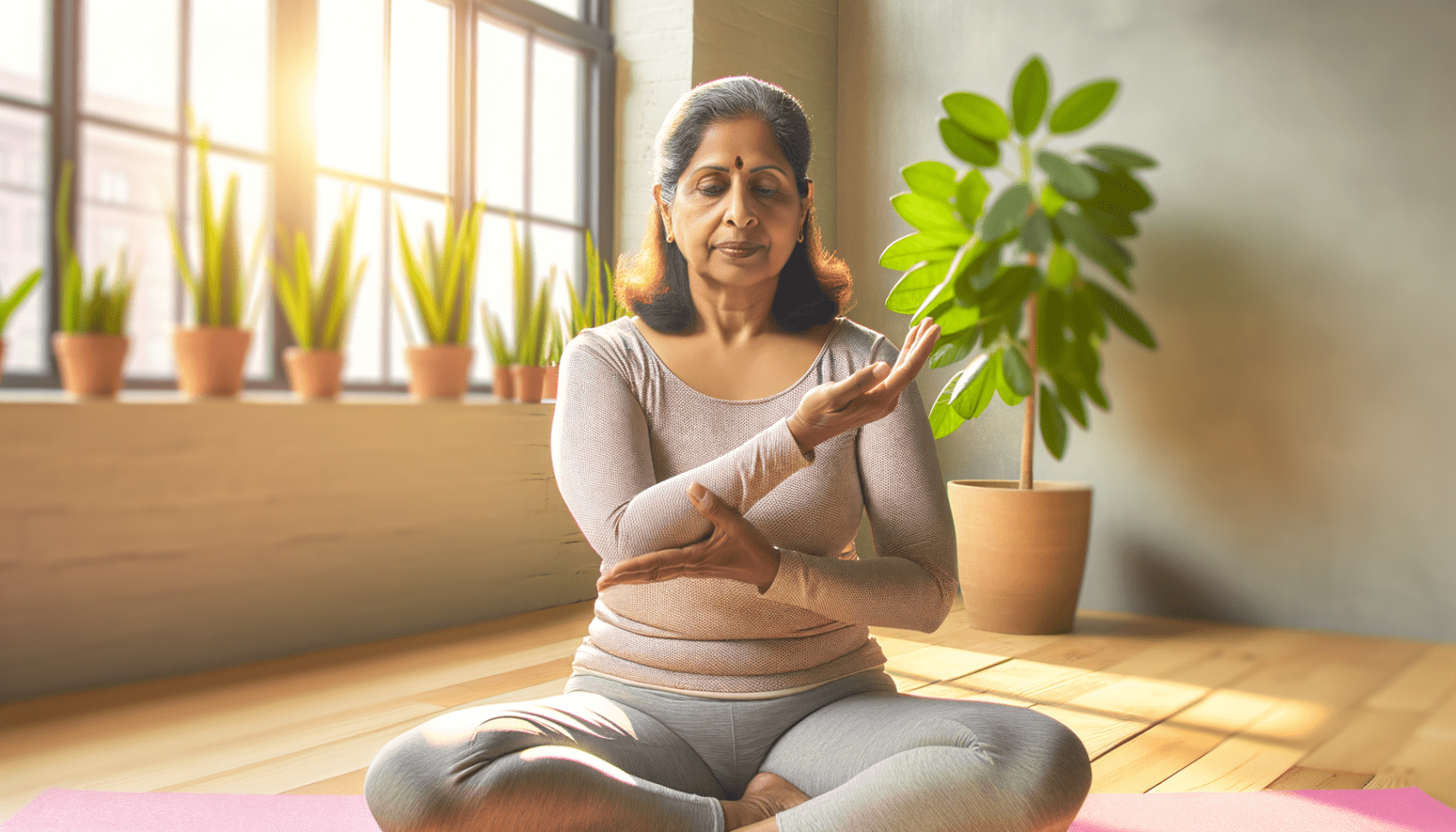Menopause marks a significant transition in a woman’s life, typically occurring in the early 50s. It signifies the end of reproductive capability and is characterized by the cessation of menstruation. The onset of menopause is a gradual process, often beginning with the perimenopausal phase, which can last for several years. During this time, the ovaries gradually produce less estrogen and progesterone, hormones that regulate menstruation, until they eventually stop releasing eggs altogether.
Common Symptoms and Impact on Quality of Life
The experience of menopausal symptoms is widespread, affecting quality of life, health status, work productivity, and the use of health services. Approximately 75% of menopausal women experience hot flashes, which are sudden feelings of warmth that can cause sweating and discomfort. While hot flashes are the most prominent symptom, they are not the only challenge women face during menopause. Other common symptoms include night sweats, emotional vulnerability, sleep disturbances, fatigue, cognitive changes, joint pain, vaginal dryness, and a decrease in sexual desire. These symptoms can last on average for 4–5 years and are reported as very distressing by 10%–20% of affected women.
Current Treatment Options and Their Limitations
Hormone therapy (HT) has been the primary treatment for relieving menopausal symptoms, but its long-term use is associated with increased risks of breast cancer and thromboembolic disorders. Consequently, many women avoid HT. Non-hormonal-based treatments such as clonidine, gabapentin, and antidepressants may also reduce symptoms but come with adverse effects like sleep disturbance, dizziness, and nausea. Non-pharmaceutical interventions, including relaxation techniques, exercise, herbal remedies, and diets containing phytoestrogens, have been suggested. However, there is a lack of convincing evidence for their efficacy, and concerns remain about dosage, duration, drug interactions, and adverse effects. The limitations of current treatments highlight the need for alternative therapies that are both effective and well-tolerated by menopausal women.
The Rise of Alternative Therapies for Menopause
Growing Interest in Nonpharmaceutical Interventions
As the global population of menopausal and postmenopausal women is projected to reach 1.2 billion by 2030, the quest for effective management of menopause symptoms has intensified. With over 85% of these women experiencing problematic symptoms such as hot flashes, sleep disturbances, and mood disorders, the limitations and potential risks associated with hormone therapy have steered many towards nonpharmaceutical interventions. Approximately 51% of women use complementary and alternative medicine (CAM), with a significant majority perceiving it as effective for menopause symptoms. Despite this, discussions between healthcare providers and patients regarding CAM options remain infrequent, leading to a reliance on internet sources for information. This underscores the need for shared decision-making and patient-centered integrated approaches to reduce the risk of undertreatment and adverse events.
Acupuncture as a Leading Alternative Treatment
Among the various CAM interventions, acupuncture has emerged as a leading alternative treatment for menopause symptoms. Acupuncture, a key component of traditional Chinese medicine, involves the insertion of fine needles into specific points on the body to restore balance and promote healing. Its popularity is partly due to its perceived efficacy in reducing vasomotor symptoms (VMS), which are the primary menopause symptoms driving women to seek treatment. Research suggests that acupuncture may offer a clinically meaningful reduction in hot flash frequency, with some studies indicating a 50% reduction as a benchmark for clinical significance. The growing body of evidence supporting acupuncture’s role in symptom management has contributed to its increased acceptance and integration into menopause management strategies.
Historical and Cultural Context of Acupuncture
Acupuncture’s roots can be traced back thousands of years to ancient China, where it was developed as a method of balancing the body’s vital energy, or qi. Historically, it was believed that disruptions in qi flow could lead to disease and that acupuncture could correct these imbalances. Over time, acupuncture has evolved and spread globally, gaining recognition not only for its traditional principles but also for its potential physiological benefits, such as the modulation of neurochemicals and hormones that may influence the thermoregulatory center in the hypothalamus. This historical and cultural context enriches the contemporary understanding of acupuncture and contributes to its appeal as a holistic and time-honored approach to health and wellness.
Recent Research on Acupuncture for Menopause Symptoms
Overview of the Danish Study and Its Objectives
The Danish study aimed to evaluate the efficacy of acupuncture as a treatment for menopause symptoms in women with breast cancer. Recognizing the limitations of hormone replacement therapy (HRT) due to associated risks, such as increased chances of breast cancer recurrence, the study sought to explore nonpharmaceutical interventions. Acupuncture, a key component of traditional Chinese medicine, has been proposed as a potential alternative therapy to alleviate menopausal symptoms, including hot flashes, sleep disturbances, and overall quality of life.
Methodology: Participants, Treatment, and Control
The study was a randomized controlled trial (RCT) that included perimenopausal and postmenopausal women aged 45-60 years who experienced an average of ≥4 vasomotor symptoms (VMS) per day. Participants were divided into two groups: one receiving up to 20 acupuncture treatments over six months and a waitlist control group receiving usual care followed by acupuncture treatments after six months. The acupuncture group was treated by licensed acupuncturists using standardized protocols, while the control group did not receive any acupuncture during the initial six months.
- Participants: A total of 209 women were recruited and randomized into the two groups.
- Treatment: The acupuncture group received treatments based on traditional Chinese medicine diagnoses, which informed the selection of acupuncture points and individualized treatment plans.
- Control: The waitlist control group received no acupuncture for the first six months, serving as a comparator for evaluating the effects of acupuncture.
Assessment Tools and Outcome Measures
The primary outcome measure was the mean daily frequency of VMS, while secondary outcomes included VMS interference with daily life, sleep quality, depressive symptoms, and other quality of life-related measures. The Daily Diary of Hot Flashes (DDHF) was used to record the frequency and severity of each VMS, providing a comprehensive assessment of the participants’ experiences.
- Primary Outcome: VMS frequency was assessed using the DDHF, which allowed for the calculation of a VMS index score.
- Secondary Outcomes: Included hot flash interference, sleep quality, menopause-related symptoms, depressive symptoms, anxiety, perceived stress, and health-related quality of life.
- Assessment Tools: Tools such as the Hot Flash Related Daily Interference Scale (HFRDIS), Pittsburgh Sleep Quality Index (PSQI), and the Women’s Health Questionnaire (WHQ) were utilized.
The study’s methodology was designed to reflect real-world clinical practice, allowing for flexibility in treatment plans and the number of acupuncture sessions. This approach aimed to provide an unbiased estimate of the clinical benefits or harms a woman with frequent VMS might expect from undergoing a course of acupuncture treatments relative to not treating VMS with acupuncture.
Findings of the Acupuncture Study
Reduction in Hot Flashes and Other Symptoms
One of the most significant findings from the acupuncture study was the reduction in hot flashes and other vasomotor symptoms. The study, which included 209 perimenopausal and postmenopausal women aged 45-60, revealed that acupuncture significantly reduced vasomotor symptoms by as much as 36.7 percent. This reduction was not only statistically significant but also clinically meaningful, as it improved several quality-of-life measures associated with menopause. These measures included hot flash interference with daily activities, sleep quality, physical symptoms, memory symptoms, and anxiety. Notably, the benefits persisted for at least 6 months beyond the end of acupuncture treatment, indicating a lasting effect of the intervention.
Participant Perceptions and Belief in Treatment Efficacy
Participants’ perceptions of the treatment’s efficacy played a crucial role in the study’s outcomes. A substantial proportion of the women who received acupuncture reported experiencing a beneficial effect, which may have contributed to the overall positive results. The belief in treatment efficacy is an essential factor in therapeutic interventions, as it can influence patient engagement and the placebo effect. However, it is also important to consider that such beliefs could potentially skew self-reported outcomes, necessitating a careful interpretation of the results.
Statistical Significance Versus Sample Size and Study Duration
The statistical significance of the study’s findings must be weighed against the sample size and study duration. While the reduction in symptoms was statistically significant, the authors of the study cautioned about the interpretation of these results. They noted that the benefits observed might be partly due to participants’ expectations or the care and attention received from healthcare providers. Additionally, the study’s duration was limited to one year, and the sample size, although adequate for detecting significant differences, may not fully represent the broader population. Future studies with larger sample sizes and longer follow-up periods are needed to confirm these findings and understand the long-term effects of acupuncture on menopausal symptoms.
Challenges in Acupuncture Research
The Placebo Effect and Its Influence on Results
The placebo effect is a well-documented phenomenon in clinical research, where participants experience an improvement in symptoms despite receiving a non-active treatment. In acupuncture research, the placebo effect presents a significant challenge, as it can be difficult to distinguish between the therapeutic benefits derived from the actual acupuncture intervention and those resulting from participants’ expectations or the additional care and attention they receive from healthcare providers.
Studies have shown that the placebo effect in acupuncture can be particularly strong due to the one-on-one interaction between the practitioner and the patient, which may enhance the patient’s expectation of benefit. This effect can lead to positive outcomes that are not directly attributable to the physiological effects of needle insertion, complicating the interpretation of study results and the determination of acupuncture’s specific therapeutic mechanisms.
Difficulties in Creating a Valid Placebo Comparator
One of the most significant hurdles in acupuncture research is the lack of a universally accepted placebo comparator. Traditional placebo-controlled trials rely on the use of an inert substance or sham procedure that mimics the active intervention but has no therapeutic effect. However, in acupuncture studies, creating a sham procedure that is both physiologically inert and indistinguishable from real acupuncture to participants is challenging.
Sham acupuncture, where needles are inserted superficially or in non-acupuncture points, is often used as a control. However, some evidence suggests that sham acupuncture may still produce physiological effects, potentially acting as an active treatment rather than a true placebo. This complicates the ability to draw clear conclusions about the efficacy of acupuncture from studies using sham controls.
Sham Acupuncture and Its Controversies
Sham acupuncture involves techniques that are intended to prevent participants from knowing whether they are receiving real or simulated acupuncture. Despite its widespread use, sham acupuncture is controversial for several reasons. Firstly, it is debated whether sham acupuncture is truly inert, as even minimal needle insertion can elicit physiological responses that may contribute to the therapeutic effect.
Additionally, the ethical considerations of using sham acupuncture come into play, as it involves deceiving participants to some extent, which can raise concerns about informed consent. The controversy is further fueled by studies that show comparable effects between real and sham acupuncture, suggesting that factors other than needle specificity, such as the therapeutic context and patient-practitioner interaction, may play significant roles in the observed benefits of acupuncture.
In conclusion, the challenges of accounting for the placebo effect, creating a valid placebo comparator, and the controversies surrounding sham acupuncture present significant obstacles in acupuncture research. These issues underscore the need for innovative methodological approaches to accurately assess the efficacy and understand the mechanisms behind acupuncture’s effects on menopause symptoms and other conditions.

From unhappy, dry, and sandpaper to silky, smooth and feeling good. That’s Cleo. Cleo is a 100% natural labial balm to moisture and soothe “your other lips”. Cleo is chemical-free, water-free, pH optimized and helps maintain and restore your delicate labial skin’s natural flora. Ideal for daily use or as needed. Get the most silky, lovable lips ever.
Implications and Future Directions
The Need for Larger and Longer-Term Studies
While recent research, such as the Danish study published in BMJ Open, has provided promising evidence that acupuncture may alleviate menopause symptoms, the need for larger and longer-term studies is evident. The Danish study, although methodologically sound, involved a relatively small sample size of 70 women and a brief intervention period of 5 weeks. To solidify the external validity and applicability of acupuncture as a treatment for menopausal symptoms, future research must involve larger populations and extended treatment durations. This will help to determine the consistency of acupuncture’s effects across diverse demographics and over longer periods, which is crucial for understanding its role in long-term symptom management.
Potential for Integrating Acupuncture in Menopause Management
The integration of acupuncture into mainstream menopause management presents an opportunity to offer women a nonpharmaceutical treatment option. Given the high adherence and tolerability demonstrated in the Danish study, acupuncture could be a viable alternative for those who cannot or choose not to use hormone therapy (HT). However, the integration process must be approached cautiously, with a clear understanding of the treatment’s efficacy, cost-effectiveness, and the readiness of healthcare systems to provide it as a complementary option alongside conventional treatments.
Ethical Considerations and Patient Expectations
As with any medical intervention, ethical considerations are paramount when incorporating acupuncture into menopause symptom management. Informed consent, patient autonomy, and managing expectations are key ethical aspects that must be addressed. Patients should be fully informed about the current evidence base, including the limitations of existing studies and the potential influence of the placebo effect. Setting realistic expectations will be crucial for patient satisfaction and the perceived efficacy of acupuncture as a treatment modality.
Thus, the potential of acupuncture to reduce menopause symptoms is supported by emerging research, but larger and longer-term studies are needed to confirm these findings. The integration of acupuncture into menopause management could provide a valuable nonpharmaceutical option for symptom relief. However, ethical considerations and patient expectations must be carefully managed to ensure that acupuncture is provided as a safe, effective, and patient-centered treatment option.

Popular Read
Conclusion
Throughout this article, we have explored the potential of acupuncture as a nonpharmacological intervention for the relief of menopause symptoms. The evidence suggests that acupuncture may offer a significant benefit in reducing the frequency and severity of hot flashes, one of the most common and distressing symptoms experienced during menopause. Additionally, acupuncture has been associated with improvements in other menopause-related symptoms, including sleep disturbances, mood swings, and overall quality of life.
One of the challenges in evaluating the efficacy of acupuncture is the placebo effect, which can play a substantial role in patient-reported outcomes. However, even when accounting for this effect, studies have shown that acupuncture can lead to statistically significant improvements in menopause symptoms compared to no treatment. It is important to consider that the patient’s belief in the effectiveness of the treatment, along with the therapeutic encounter itself, may contribute to the overall benefit experienced.
The Future of Acupuncture in Mainstream Medicine
As the body of research grows, acupuncture may become increasingly integrated into mainstream medical practice for the management of menopause symptoms. Future studies should aim to be larger, more rigorous, and longer-term to fully establish the role of acupuncture in menopause management. Ethical considerations, such as informed consent and managing patient expectations, will be crucial as acupuncture moves toward standard care. The potential for acupuncture to serve as a safe and effective alternative to hormone replacement therapy could make it an attractive option for many women seeking relief from menopause symptoms.
In conclusion, acupuncture presents a promising avenue for symptom relief in menopausal women. While the placebo effect cannot be entirely ruled out, the subjective improvement in patient outcomes and the low risk of adverse effects position acupuncture as a viable treatment option. As research continues to evolve, it is hoped that acupuncture will gain wider acceptance and become a standard part of the therapeutic arsenal against menopause symptoms.










